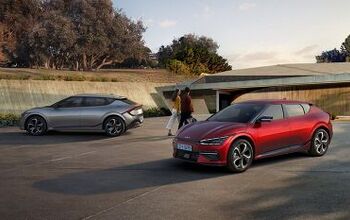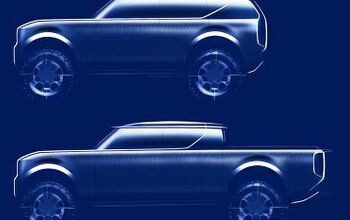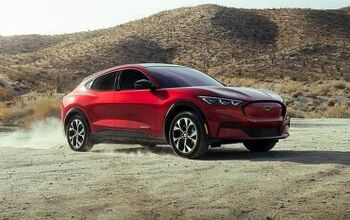Ask The Best And Brightest: What's Wrong With The Super Bowl Car Ads?
This ad, for the Chevy Camaro, was the most-watched spot during the Super Bowl, pulling in 119,628,000 sets of eyeballs according to the ratings agency Nielsen. A Chevy Cruze ad took second place in the “most-watched” category, and Chrysler’s much-chattered-about 200 spot tied for fourth (with 5 other spots, including one for Bridgestone Tires), with 17.565m viewers. In short, cars and car-related products not only accounted for many of the ads, they managed to snag the time slots where the fewest people were taking bathroom breaks or grabbing more bacon-wrapped buffalo wings. But remember, there’s more to effective advertising than merely drawing eyeballs…
For one thing, an ad has to reach its viewers on an emotional level. It needs to elicit sympathy… and for the amount of money needed to run a Super Bowl spot, it needs to elicit with gusto. VW’s “Darth Vader” Passat ad did just that, although it did so to millions fewer people than Chevy’s spots. Meanwhile, Chevy’s “most-watched” ads didn’t rate on Nielsen’s top ten “most liked,” a quality the ratings agency defines thusly:
The Likeability score is the percentage of viewers who report to like “a lot” an ad they were exposed to during the normal course of viewing the Super Bowl, among those recalling the brand of the ad. These scores are then indexed against the average score for all Super Bowl ads (Likeability Index). 100 equals average. For example, with a Likeability Index of 186, the Volkswagen “Darth Vader” ad was almost twice as liked compared to the average Super Bowl spot.
And in a world that’s oversaturated with advertising, would you prefer a “quantity” impact or a “quality impact”? But then, “likeability” isn’t everything in advertising either. After all, who cares how good an ad makes the viewer feel about a product or brand if said viewer is unable to remember the product or brand being promoted? That’s where Nielsen’s “most recalled” index comes in, a metric described as
the percentage of viewers who can Recall the brand of an ad they were exposed to during the normal course of viewing the Super Bowl. These scores are then indexed against the average score for all Super Bowl ads (Recall Index). 100 equals average. For example, with a Recall Index of 179, the Doritos “Pug” ad was 79% better-recalled than the average Super Bowl spot.
More by Edward Niedermeyer
Latest Car Reviews
Read moreLatest Product Reviews
Read moreRecent Comments
- FreedMike If Dodge were smart - and I don't think they are - they'd spend their money refreshing and reworking the Durango (which I think is entering model year 3,221), versus going down the same "stuff 'em full of motor and give 'em cool new paint options" path. That's the approach they used with the Charger and Challenger, and both those models are dead. The Durango is still a strong product in a strong market; why not keep it fresher?
- Bill Wade I was driving a new Subaru a few weeks ago on I-10 near Tucson and it suddenly decided to slam on the brakes from a tumbleweed blowing across the highway. I just about had a heart attack while it nearly threw my mom through the windshield and dumped our grocery bags all over the place. It seems like a bad idea to me, the tech isn't ready.
- FreedMike I don't get the business case for these plug-in hybrid Jeep off roaders. They're a LOT more expensive (almost fourteen grand for the four-door Wrangler) and still get lousy MPG. They're certainly quick, but the last thing the Wrangler - one of the most obtuse-handling vehicles you can buy - needs is MOOOAAAARRRR POWER. In my neck of the woods, where off-road vehicles are big, the only 4Xe models I see of the wrangler wear fleet (rental) plates. What's the point? Wrangler sales have taken a massive plunge the last few years - why doesn't Jeep focus on affordability and value versus tech that only a very small part of its' buyer base would appreciate?
- Bill Wade I think about my dealer who was clueless about uConnect updates and still can't fix station presets disappearing and the manufacturers want me to trust them and their dealers to address any self driving concerns when they can't fix a simple radio?Right.
- FreedMike I don't think they work very well, so yeah...I'm afraid of them. And as many have pointed out, human drivers tend to be so bad that they are also worthy of being feared; that's true, but if that's the case, why add one more layer of bad drivers into the mix?



































Comments
Join the conversation
A day late and a dollar short as usual, but after reading and evaluating how I would contribute to this topic, all I can come up with is this: The ad agencies are simply trying too hard and have gone over the top in trying to get our attention and, all too often, losing their point in the process. For example, I see nothing positive about glorifying "thuggery" and "hopelessness" as I did in the Chrysler ad for the 200. A (c)rap "star" and a dead city are nothing to be proud of, and somehow showing this as a positive does nothing for me. You don't glorify "darkness". I am a firm believer in looking at the better side of things, as Johnny Mercer sang: "Accentuate the positive, eliminate the negative, don't mess with Mr. In-Between". Case in point: 40 years ago, all the car dealers in Roseville, Ca. got together and pooled their money to make one good series of commercials that were absolutely corny, but absolutely hilarious that I remember to this day. Simple. Also during that time, Jay Brown of Spartan Dodge in San Jose sponsored all-night movies on channel 44 in the Bay area, even had full-size posters made extolling his "virtues" of "price-chopping", offering the "best deals in town". Again, simply, but funny and effective. Things now are so amped-up, they don't work all too often and leaves me scratching my head, asking myself: "what, exactly, are they trying to sell me?" This latest crop of Super Bowl ads leave me cold, along with the non-car ones. The VW was the best, because it was simple and humorous and innocent. maybe the ad agencies need to re-address their standards. I know full well that it's not a "Leave it to Beaver" world, it never was, but your message should at least make your prospective customers feeling good and not paranoid.
At NYTimes.com, I just experienced the next step in the 200's marketing. To "Imported from Detroit," they have added the tagline, "A car you don't have to own to be proud of." The ad also contains a bald eagle. No, really.